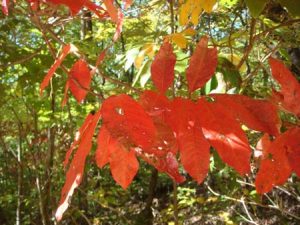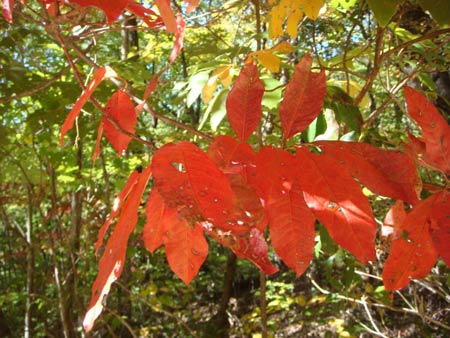
CLEMSON, S.C. – A rare summer cool snap may mean that fall colors in the Southern Appalachians could peak a few days sooner than normal, according to Clemson University forest ecologist Donald Hagan.
“The polar vortex that visited our region in July created conditions for a slightly earlier leaf looking season. Peak color at the upper elevations usually occurs around October 15th. Look for the peak to occur a few days earlier this year,” Hagan said.
During scouting and laboratory trips into middle and higher elevations, Hagan observed that blackgum, flowering dogwood and sourwood are beginning to turn, while mountain ash and fire cherry are brightening at elevations above 5,000 feet.
Urban landscape trees such as sugar maples are not always reliable harbingers of what is happening away from cities in more natural forest ecosystems.
“Sugar maples planted in parking lots and right-of-ways are changing fast. They are beautiful to look at but their natural habitat is farther north, so they are genetically predisposed to early color. Urban trees are also stressed, which can lead to accelerated color change,” Hagan said.
Leaf-lookers should watch the weather reports closely. Crisp nights followed by clear, mild days will cause colors to change more rapidly.
The timing and quality of color is based on a complex interaction of environmental factors, including rainfall, temperature and increasing night length, which trigger a series of chemical processes in the leaves.
As days become shorter and nights cooler, the green chlorophyll in leaves begins to degrade and other naturally occurring pigments emerge. Different pigments create different colors.
The most vibrant colors come when a dryer summer is followed by crisp autumn nights. Too much cold too early can shorten the season and a soggy, cloudy fall can reduce red-producing anthocyanin, which needs bright sunlight. Drought can cause leaves to fall before they fully turn.
When it comes to fall foliage, New England and the Upper Midwest get all the love, but the biodiversity of the Southern Appalachians creates spectacular results.
“We have exceptional diversity of deciduous trees, which — in concert with our highly variable landscape — means that our fall color is second to none,” Hagan said.
The complex topography and multitude of microclimates means that leaf lookers should explore their surroundings.
“Just because the color isn’t as vibrant in one location doesn’t mean you won’t stumble upon a spectacular vista around the bend,” Hagan said.

